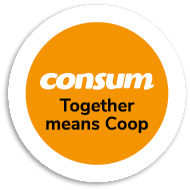Types of fabric softener
Learn about the different types of fabric softeners and choose the ideal one to give your garments softness and freshness. Make your clothes feel better!
TRIED AND TESTED
Share

Why use fabric softener?
Fabric softeners are a type of detergent that contain substances called “cationic surfactants”. These elements adhere to the surface of the fabrics providing softness and fragrance. During the wash cycle, the softeners enter the fibres of the fabric, forming a thin layer of chemicals that reduce the friction and harshness of washing on the garments. Over time, the mechanical friction of the washing machine along with the hardness of the water affect fabrics and garments end up becoming rough. The main objective of a good softener is keep fabrics feeling pleasant and add an appealing aroma.
Nevertheless, we should not use softener for all types of garments - it is best avoided with technical sportswear or wools for example. In the case of sportswear, softener saturates its fibres, reducing the breathable qualities of this fabric. Softener also reduces the natural ability of wool to regulate temperature and, above all, humidity.

What types of fabric softeners are there?
Currently, two types of softeners are mainly found on the market - concentrates and non-concentrates - representing one of the main differences. The main ingredient in softener is water. When all this water evaporates along with any volatile substances we are left with the dry extract, which is also the main indicator of how diluted the product is.
We also find hypoallergenic softeners on the supermarket shelves, which are particularly recommended for allergy sufferers because wearing the garments treated with it does not create any type of skin irritation.
Another difference when choosing softener is the format in which we are going to use it:
- Liquid softener: this is the most popular format. To use it, simply add the amount recommended by the manufacturer on the label.
- Glass or granulate softener: made of wool or BPA-free (bisphenol-free plastic) heat-resistant plastics. However, it is less effective on some fabrics, and can leave a touch of stiffness or roughness.
- Dryer sheets: these are wipes moistened in softener that you add to the drying cycle of clothes. They are very easy to use.






